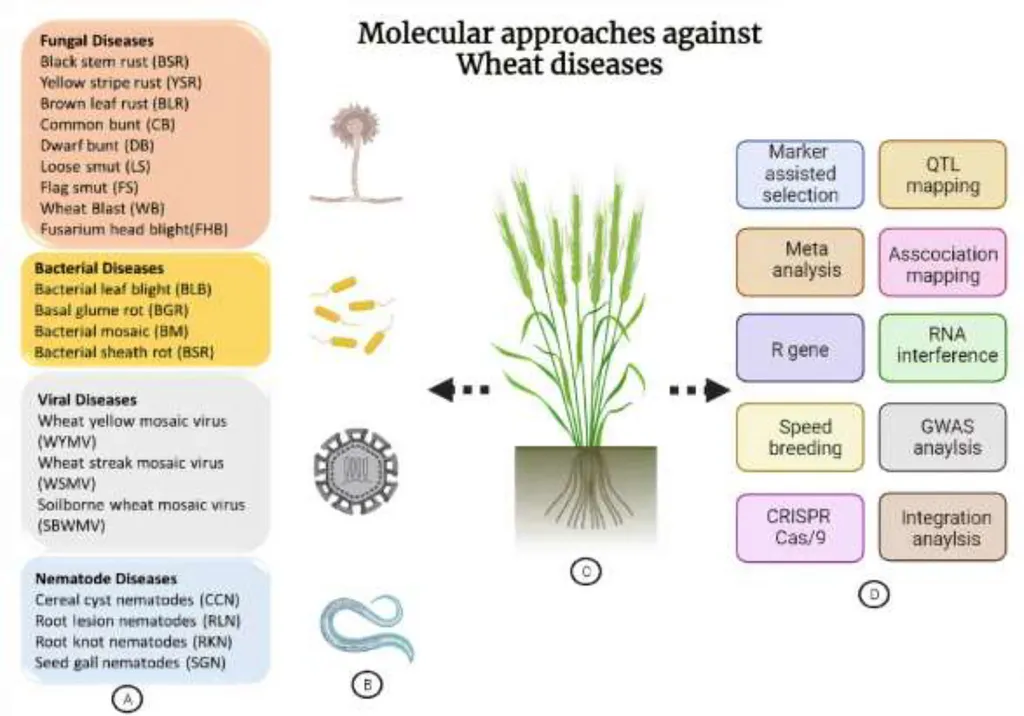In the relentless battle against fungal diseases that plague wheat crops, a groundbreaking study published in *Plant Methods* (which translates to *Plant Methods* in English) offers a promising new tool for early detection and contamination risk assessment. Led by Zhizhou Ren from the School of Smart Agriculture (Artificial Intelligence) at Nanjing Agricultural University, the research introduces an advanced detection algorithm that could revolutionize post-harvest management and significantly reduce economic losses in the agricultural sector.
Fungal diseases in wheat, caused by pathogenic spores, have long been a thorn in the side of farmers and agricultural businesses. Traditional detection methods are not only time-consuming and labor-intensive but also struggle to accurately identify small spores in complex environments. Enter the YOLO-ASF-MobileViT detection algorithm, a cutting-edge solution designed to detect spores of varying sizes, shapes, and textures with remarkable precision.
The study focused on four common types of pathogenic wheat spores: Fusarium graminearum, Aspergillus flavus, Tilletia foetida (sporidium maturum), and Tilletia foetida (sporidium immaturum). By integrating the Attentional Scale Sequence Fusion (ASF) into the original YOLOv5s model, the researchers enhanced the algorithm’s ability to capture small details in spore images and fuse multi-scale feature information. Additionally, the incorporation of the Mobile Vision Transformer (MobileViT) attention mechanism improved both local and global feature extraction for small spores.
The results speak for themselves. The YOLO-ASF-MobileViT model achieved an overall mean Average Precision ([email protected]) of 97.0%, outperforming advanced detectors like TPH-YOLO (95.6%) and MG-YOLO (95.5%). Compared to the baseline YOLOv5s model, it improved the average detection accuracy by 1.6%, with a notable 4.3% increase in detecting small Aspergillus flavus spores, reaching an impressive 90.8%.
“This algorithm represents a significant leap forward in our ability to detect and manage fungal diseases in wheat,” said Zhizhou Ren. “Its high robustness in challenging scenarios such as spore adhesion, occlusion, blur, and noise makes it a reliable tool for early contamination warning in post-harvest management.”
The commercial implications of this research are substantial. By enabling efficient and accurate detection of wheat fungal spores, the YOLO-ASF-MobileViT model can support early contamination warning, reducing the risk of economic losses due to fungal diseases. This is particularly crucial for the energy sector, where wheat is a vital component in the production of biofuels and other energy-related products.
As we look to the future, this research paves the way for further advancements in agricultural technology. The integration of artificial intelligence and machine learning into agricultural practices holds immense potential for improving crop yields, reducing losses, and enhancing overall efficiency. With continued innovation and investment, we can expect to see even more sophisticated tools and technologies emerging in the field of smart agriculture.
In the words of Zhizhou Ren, “This is just the beginning. The potential for AI in agriculture is vast, and we are excited to explore the possibilities further.” As we stand on the brink of a new era in agricultural technology, the YOLO-ASF-MobileViT detection algorithm serves as a beacon of hope and a testament to the power of human ingenuity in the face of agricultural challenges.

